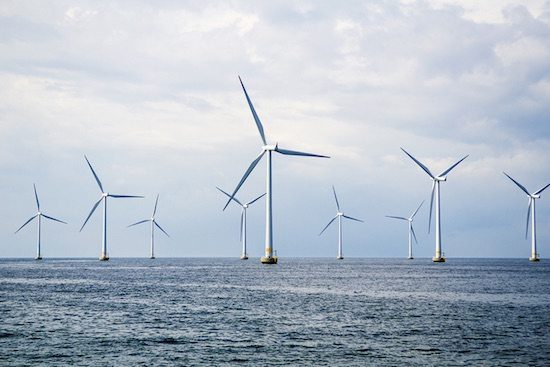A new draft bill issued by the German Federal Ministry of Economy and Energy would seek to amend the country’s Offshore Wind Act (WindSeeG) to raise the country’s offshore wind target to 40GW by 2040.
Germany’s previous offshore wind target was a goal of 15GW by 2030 which, if the draft law (PDF) is passed, will be raised to 20GW, serving as an interim target to the proposed new long-term target of 40GW by 2040.
“We welcome the fact that the Federal Ministry of Economics has recognised the importance of long-term planning for the offshore wind industry,” said WAB Managing Director Heike Winkler.
“The 40-gigawatt target for 2040 contained in the draft bill – ideally combined with an immediate special tender promised in the government’s coalition agreement – would bring back investment security and give the domestic wind industry a fresh start with its experience background.
“Without the immediate tendering of otherwise unused grid connection capacities, innovative companies and future-oriented jobs will be unnecessarily jeopardized,” she added.
Importantly, the proposed interim target of 20GW is seen as potentially flexible and could be raised higher as conditions and policy allows.
WAB highlights the importance of a flexible interim target so as to better tap into climate protection potentials such as offshore wind and to ensure employment and value creation – particularly as country’s look for ways to rebuild hurt economies caused by the global COVID-19 pandemic.
For example, WAB points to 2019’s “Bremen Declaration” as an example of the benefits of a flexible target, which calls for an offshore wind target of 35GW by 2035.
The flexibility of the planned interim target is also an important stepping stone in Germany contributing to a more ambitious European Union climate target for 2030.
“We support our Chancellor’s plan to reduce emissions in the European Union from the current 40% to 50% to 55% of 1990 levels by 2030 in line with the European Green Deal,” said WAB e.V.’s CEO Irina Lucke. “The wind industry as an economic and innovation driver is an ideal partner for this.”
Concerns are being raised, however, over the included proposal of a new tendering model for offshore wind projects, which WAB believes “could considerably slow down the exploitation of Germany’s offshore wind potential at sea.”
The proposed modification to the country’s tender process would introduce a second round of bidding so as to reduce the risk of bidders overestimating the “economic value of the object of the tender”.
Only last month, WAB and the Association of German Wind Farm Operators (BWO) came together to advocate for the introduction of Contracts for Difference (CfD) as “a long-term reliable investment and financing framework for offshore wind projects in Germany.”
In a joint letter to the Federal Ministry of Economics and Energy, WAB and BWO pledged their willingness to take responsibility for the “rapid recovery and reconstruction of the German economy after the Corona crisis, in the spirit of the European Green Deal.”
“Only if the 20 GW offshore wind by 2030 target is finally anchored in law, we will have a realistic chance of achieving our climate targets at all,” said BWO managing director Stefan Thimm.
“Our member companies and the authorities involved urgently need planning and financing security. Electricity from offshore wind energy is now more cost-effective than almost any other technology, and the introduction of Contracts for Difference will make it possible to reduce electricity generation costs by another 30 percent compared to refinancing via Power Purchase Agreements (PPAs).
“Stable investment conditions based on Contracts for Difference would not only strengthen the domestic small and medium-sized businesses, but also relieve the burden on the consumer and thus strengthen the international competitiveness of electricity prices.”
The fine-tuning of Germany’s governmental and policy support for its offshore wind sector is vital as the country looks to generate more renewable electricity and eventually begin producing “green hydrogen” from offshore wind farms.
“In order to ensure that the ‘green’ hydrogen sector also has a sustainable future and a long-term perspective, we need a national hydrogen strategy in parallel to the ongoing legislative process for offshore wind before the parliamentary summer break,” said WAB Managing Director Heike Winkler.
“Wind and hydrogen are ideal partners, therefore the hydrogen strategy should focus on building a domestic market for ‘green’ hydrogen, with concrete electrolysis capacity expansion plans beyond 2030,” said Winkler.
“WAB e.V. is ready for an open dialogue on how the new targets for offshore wind and a domestic market for ‘green’ hydrogen can be implemented efficiently and safely,” said WAB e.V.’s CEO Irina Lucke.
RenewEconomy and its sister sites One Step Off The Grid and The Driven will continue to publish throughout the Covid-19 crisis, posting good news about technology and project development, and holding government, regulators and business to account. But as the conference market evaporates, and some advertisers pull in their budgets, readers can help by making a voluntary donation here to help ensure we can continue to offer the service free of charge and to as wide an audience as possible. Thank you for your support.








